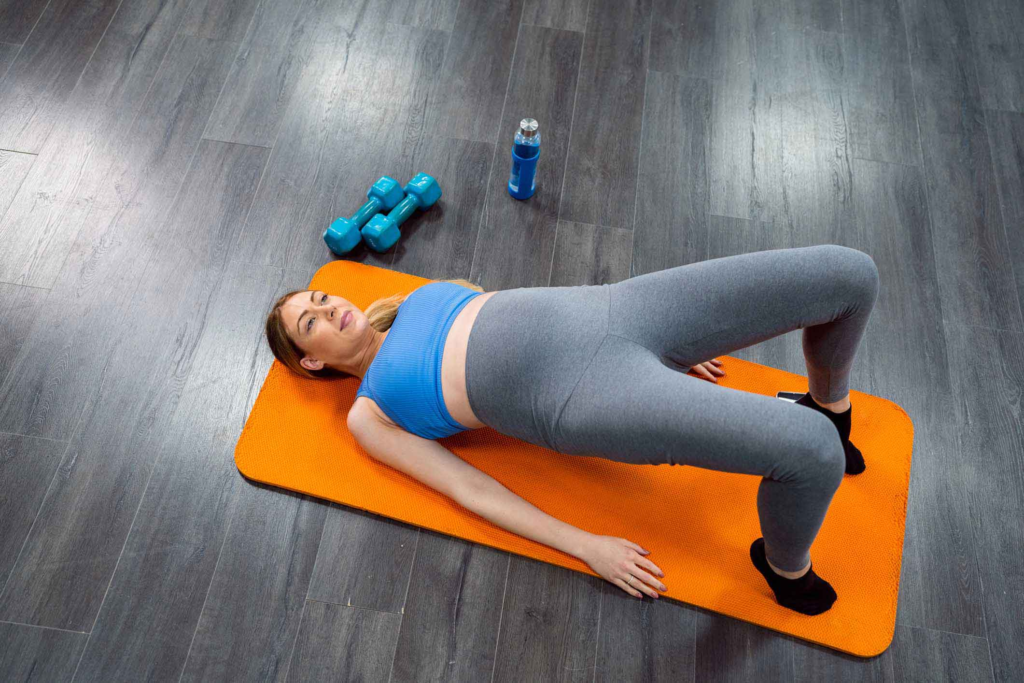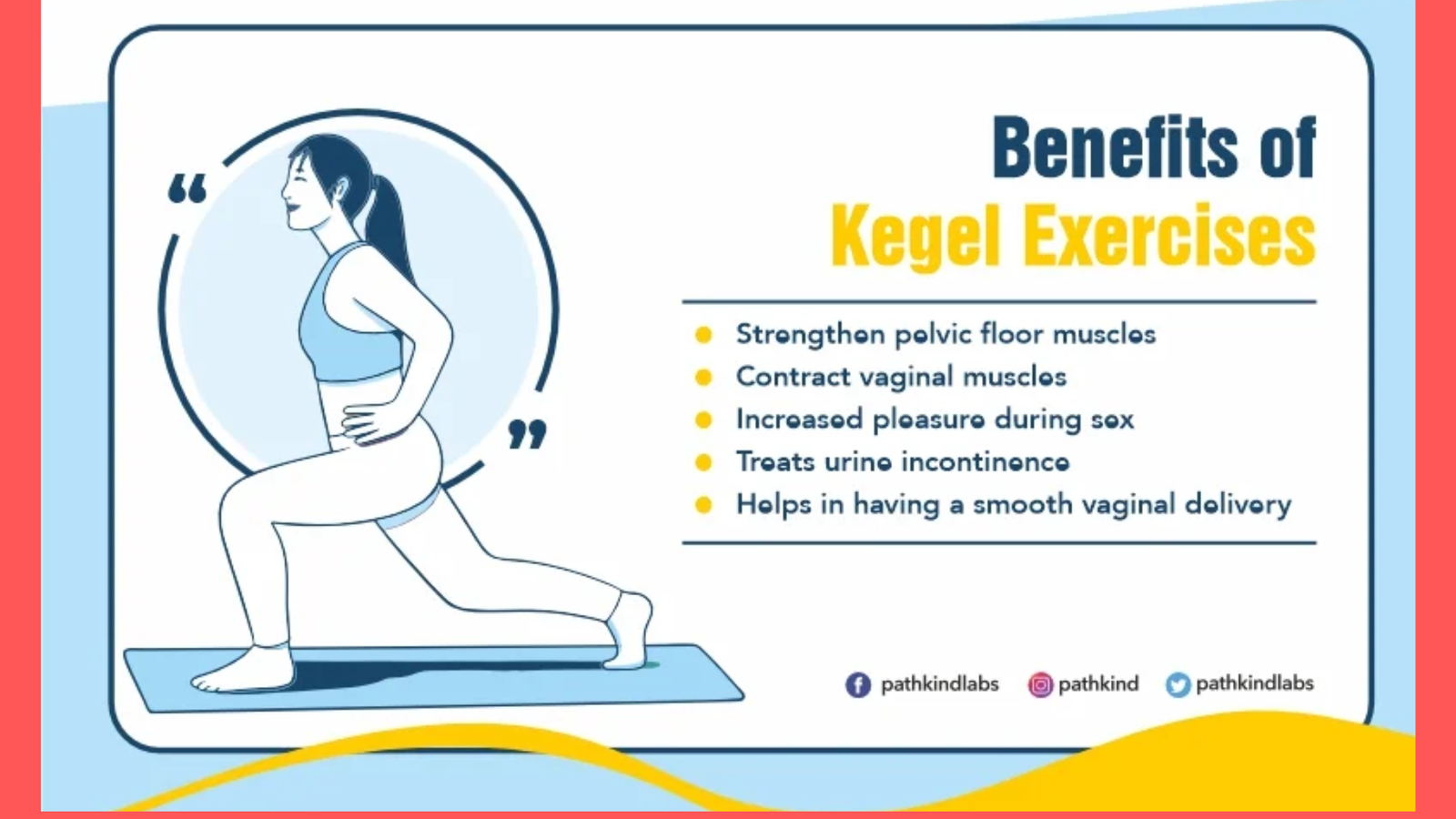
Kegel exercises involve simple clench-and-release movements designed to strengthen your pelvic floor muscles. The pelvis is the area located between your hips that keeps your reproductive organs in place. Your pelvic floor consists of tissues and muscles that form a supportive sling at the base of your pelvis, keeping your organs in place.
A weakened pelvic floor can result in problems like loss of bowel or bladder control. Once you learn to do Kegel exercises, you can perform them anywhere and at any time, whether at home or standing in line at the bank. They offer benefits for both men and women. Let’s check how Kegel exercises can help you.
What Are Kegel Exercises?

Kegel exercises are designed to strengthen the pelvic floor muscles, which support the rectum, uterus, bowel, and bladder. These targeted exercises not only keep these muscles in shape but also help prevent passing stool or gas and urine leaks accidentally.
In 1948, Dr. Arnold Kegel, an American gynecologist, conducted pioneering research on how certain exercises could strengthen pelvic floor muscles weakened by surgery, aging, or pregnancy. After discovering that contracting and relaxing these muscles was effective, he published his findings, and the exercises were named after him.
While Kegel’s initial research focused on women, recent studies have shown that men can also reap rewards from doing pelvic floor muscle exercises. Strengthening these muscles can help with urinary incontinence and might result in greater sexual pleasure and enhanced orgasms for everyone. Kegel exercises can address issues like:
- Urge incontinence (sudden need to urinate)
- Urinary incontinence (leaking urine)
- Pelvic organ prolapse (when pelvic organs sag or bulge into the vagina)
- Fecal incontinence (leaking stool)
How to Find The Pelvic Floor Muscles in Women?
When starting a kegel exercise for the first time, identifying the correct muscles can be challenging. One method to identify the muscles is to insert a clean finger into your vagina and squeeze your vaginal muscles around it. Another way to find these muscles is by attempting to stop your urine flow midstream.
The muscles you engage in doing this are the pelvic floor muscles. Familiarize yourself with how they sense when they tighten and release. However, you need to use this technique only for learning. Regularly starting and stopping your urine flow or doing Kegel exercises with a full bladder isn’t recommended.
This can lead to incomplete bladder emptying, increasing the risk of urinary tract infections (UTIs). If you’re still unsure about locating the right muscles, consult your gynecologist. They might suggest using an object known as a vaginal cone. You need to put this object into the vagina and hold it in place using your pelvic floor muscles.
Furthermore, biofeedback training can help you find out and focus on your pelvic floor muscles. In this process, a doctor inserts a small probe inside your vagina or places adhesive electrodes on the outside part of your anus or vagina.
You will then be requested to do a Kegel exercise. A monitor will display whether you used the correct muscles to contract and how long you maintained the contraction.
How to Find The Pelvic Floor Muscles in Men?
Men can also find it challenging to identify their correct pelvic floor muscles. One method is to gently put a finger inside the rectum and attempt to squeeze it without compressing the muscles of the thighs, abdomen, or buttocks. Another useful technique is to tighten the muscles that prevent you from passing gas.
If you are still unsure, try halting your urine stream to find the pelvic floor muscles. Like with women, this method is effective for identification but shouldn’t be done regularly. Furthermore, biofeedback training can assist men in finding their pelvic floor muscles. If you are having difficulty finding these muscles, consider scheduling a visit with your doctor for guidance.
How To Do Kegel Exercises?

To perform Kegel exercises, lift, hold, and then relax your pelvic floor muscles. One way to practice is by starting and stopping your urine flow. Once your urine flow begins, squeeze your muscles to stop it, and you should feel them lift. Another method is to tighten the muscles that prevent you from passing gas. Completing this action counts as one Kegel.
Relax the pelvic floor muscles and repeat. However, avoid doing Kegels while urinating regularly, as this can lead to issues such as urinary tract infections. When doing Kegel exercises, try holding the muscles for three seconds, then relax for three seconds. Repeat this action ten times in a row to complete one set.
If 10 repetitions are too challenging for you, perform as many as possible and gradually increase over time. Begin with a few Kegels and slowly extend the duration and number of Kegel exercises in each session. Aim to complete one set of ten Kegels 2-3 times daily.
Kegel exercises are safe and can easily fit into your daily routine. You can practice them while watching TV, brushing your teeth, having dinner, or commuting to work.
Benefits of Kegel Exercises
Regularly practicing Kegel exercises can strengthen and tone your pelvic floor, which may help prevent, improve, or ease specific chronic conditions. Some kegel exercises benefits are:

Improves Bladder Control
In the U.S., over a quarter to a third of males and females experience urinary incontinence. Also, around 33 million U.S. adults experience overactive bladders. Bladder control problems can arise from factors like diabetes, aging, high blood pressure, obesity, and stroke.
In women, menopause, pregnancy, and cesarean or vaginal delivery can lead to urine leakage. On the other hand, prostate issues can increase the risk for men. Kegels can assist by strengthening pelvic muscles that have become weakened or overstressed, thus improving bladder control.
Benefits of Kegel Exercises Sexually
Pelvic floor muscles are crucial for the contractions women experience during orgasm. Childbirth, hysterectomy, menopausal hormonal changes, or other health problems can weaken these muscles, potentially reducing sexual pleasure.
Research indicates that doing Kegel exercises to strengthen the pelvic floor muscles can boost female sexual arousal by increasing blood flow to the genitals, relaxing the vagina, and enhancing lubrication.
Benefits of Men’s Kegel Exercises
Kegel exercises aren’t just for those with a uterus or vagina; men can benefit from them as well. Kegels can strengthen men’s pelvic muscles, helping with bowel or bladder incontinence and reducing post-urination dribbling.
Research indicates that consistent pelvic floor muscle exercises can help with erectile dysfunction. They may also improve sexual experiences by increasing sensation during orgasm and offering better control over ejaculation.
The Bottom Line
A variety of factors can lead to a loss of pelvic floor muscle strength and tone, resulting in reduced sexual pleasure and bladder control problems. Kegel exercises are effective for strengthening these muscles. There are several reasons why your pelvic floor might weaken.
Symptoms of a weakened pelvic floor include leaking urine or stool or feeling the urge to urinate when you don’t need to. Gradually increase your Kegel exercises to several times a day.
Practicing Kegels daily for at least 15 weeks can help strengthen your pelvic floor muscles and enhance sexual and bladder function. If you are unsure about how to do Kegel exercises correctly, don’t hesitate to reach out to a healthcare professional for guidance.
